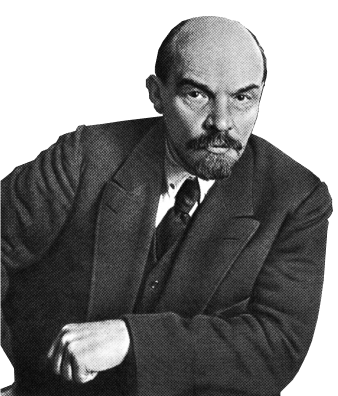After the worst economic crisis since the Great Depression, governments around the world have been quick to announce that the recession is over and that a recovery is on the horizon. Although the recession may already be technically over, the recovery which we will be seeing will not bring the economy back to pre-recession levels. Most likely, it will be a weak one with little job growth. Government programs and services that benefit the working class are going to be dismantled at an even faster pace than in the previous two decades in order to pay off the massive deficit created to bail out the banks and bosses. The current generation can no longer expect a better living standard than that of their parents.
The Quebec Liberal government has been hasty and declared that the Quebec economy will bounce back faster than the economy in the rest of Canada. It is true that Quebec’s economy shrunk less than the rest of the provinces during the recession; in Quebec, GDP contracted by 2.3%, compared to the 5.3% drop in GDP experienced by the national economy. Even if the drop in GDP was less than in the rest of Canada, this contraction in the economy nonetheless caused the loss of tens of thousands of jobs. The unemployment rate in Quebec is now up to 9.0%, only 0.3% shy from Ontario that was hit heavily by the auto sector woes.
Like all other countries, the Quebec government has cushioned the impact of the recession by injecting a multi-billion dollar stimulus package into the economy. Roughly $8 billion has been committed for 2009 and nearly $7.5 billion will be injected into the economy in 2010. This measure has put Quebec in a big deficit, which is estimated to be $4.7 billion for the 2009-2010 budget and another $4.7 billion in 2010-2011. Finance Minster Raymond Bachand warned Quebecers to expect deficit spending to continue until at least 2013-14, and that the government will resort to numerous steps to balance the budget. Naturally, this could only means a policy of reducing spending in social programs.
The press release from the PLQ states, “In the course of implementing the Plan to return to balanced budgets, slower revenue growth will require that growth in overall spending be reduced.” The Liberal government has put forward a plan to reduce annual growth in program spending to 3.2% as of 2010-2011, which is lower than the 4.7% growth in 2008-2009, and still lower than the average 7.6% in other provinces. This is well below what is required when we consider the combined impact of inflation, population growth, and the economic crisis which has hit the working class.
The burden of this deficit will fall on the working class. The Quebec government will be increasing the QST (Quebec Sales Tax) from 7.5% to 8.5% by 1st January 2011. This increase will mostly affect working people, costing up to $150 for a couple and $125 for a person living alone. The government also plans to increase electricity costs by 1 cent per kilowatt hour, which, experts estimate, will translate into an average annual increase between $175 and $265 per family. This is done while Hydro-Québec president Thierry Vandal will reportedly receive a bonus of $120,000 this year. This measure has also been accompanied by a rabid call by the right-wing to privatize Hydro-Quebec under the guise of freeing the province from its huge debt. For decades, Quebec workers have been able to enjoy relatively cheaper electricity because of the “nationalized” character of Hydro-Quebec. Putting the electricity cost under the whims of the free market – which has been proven to be completely incompetent by the recent economic crisis – will only mean a further increase in the electricity rate at the expense of the working class.
The Charest government is treading on very shaky ground. Afraid of the public opposition, Charest has announced that his government is not going to touch the $7-a-day daycare and that any cuts to the social program will be done with public consultation, though curiously the above mentioned increases seem to be implemented without any public consultation. The government is simply waiting for a more appropriate time to carry out more austerity measures because it is afraid that any wholesale attack will rouse the Quebec working class.
In the meantime, the mainstream media – the mouthpiece of big businesses – is filled with editorial articles urging the government to carry out public service cuts and user fee hikes more swiftly. On September 28, Andre Pratte, the chief editorial writer for La Presse, wrote an editorial titled “The Tariff Revolution;” in it, he wrote, “Mr. Charest has the opportunity to force Quebec to make a historic turn in the financing of its public services and thereby to end the unhealthy culture of the free ride.” [Italic added]. One week later, another editorial by Alain Dubuc, from the same newspaper, urged the government to defy any public opposition to cuts: “The fixing of public finances cannot be an exercise in direct democracy, or in citizen participation.” This is the true nature of bourgeois democracy when its mask is taken off: to force and to defy direct demoracy and citizen participation. This is simply a euphemism for the dictatorship of the bosses. Capitalism has not only failed economically but also politically. Democracy is thrown out the window as the ruling class sees fit.
With a mounting deficit and a dark prospect for real economic recovery, the ruling class will have to resort to more cuts. For this economic attack to succeed, the government will also have to attack the democratic rights of workers. This is the real face of Quebec’s economic recovery. With projected budget deficits until 2014, the next five years will likely see an intensification in the class struggle. The bosses will look for more concessions from the working class. Workers will need to fight back in order to defend the little they currently have.
At the moment, the trade union leadership has not given much leadership to its members. The 2009 May Day demonstration, for example, was very poorly organized. Many workers stayed home, and others did not come out because they felt that the trade union leaders couldn’t provide any clear solutions to the economic crisis.
Things may change in the coming year, however. 475,000 Quebec public sector workers organized by the FTQ, the CSN, and the SISP have formed a Common Front to negotiate as a single bargaining unit. The unions’ contract end on 31st March. The workers are seeking an 11.25% wage increase over a three-year period. In 2005, the Charest government imposed a six-year deal with two-year pay freeze and a meager increase of 2% for four years. In the latest round of negotiations, the government is once again taking a hard line with workers, proposing an increase of 7% in workers’ wages and benefits over a five-year period—a fraction of what the workers are demanding. The massive budget deficit gives the government an excuse to drive a hard bargain with public sector workers. The union leaders are left with two choices: to surrender or to fight. The latter means having to challenge capitalism head on because the system can no longer provide basic reforms.
The so-called economic recovery will be one laden with attacks on the living standards of workers. It cannot be otherwise. However, there is a growing anger amongst workers that enough is enough. A survey by the marketing film Leger published in the Journal de Montreal gives the following picture: when asked about fee increases for public services, 65% responded “with anger” and another 29% said that while they understood why the government was moving in that direction, the idea upset them. The question of leadership becomes one of importance here. The anger is there and the willingness to fight is there. What is now needed is a leadership that can channel this power into confronting the bosses and stopping the bosses’ attacks on the working class. The formation of a Common Front can be a good first step in this struggle. Quebec workers must not pay for their crisis!

